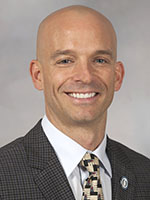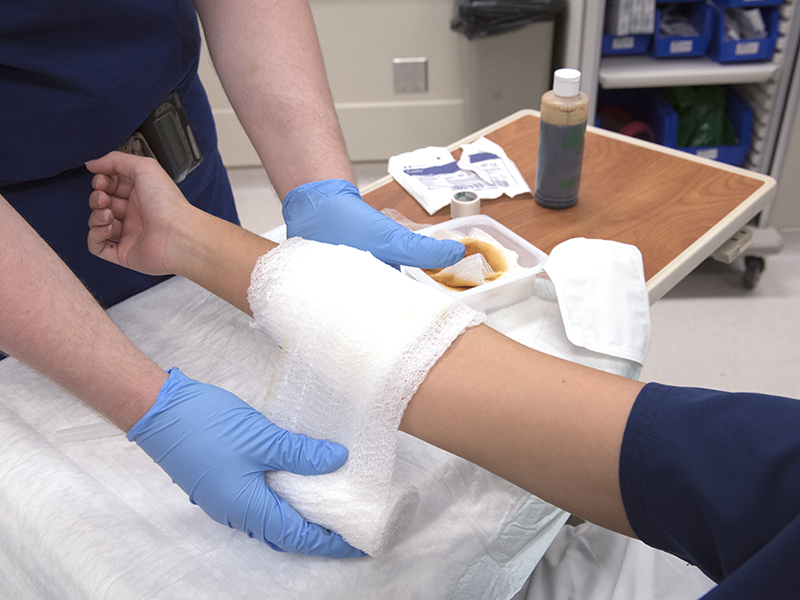Early recognition, rapid treatment can help prevent potentially deadly infection
NOTE: This article originally appeared in the November 2017 issue of CONSULT, UMMC's monthly electronic newsletter. To have CONSULT, and more stories like this, delivered directly to your inbox, click here to subscribe.
Most of the time, life-threatening sepsis develops outside of a hospital because someone doesn’t recognize the seriousness of an infection that starts out small.
But when the symptoms overtake the body and treatment isn’t swift, sepsis can lead to a hospital stay and rapid deterioration of tissue and organs – and possibly death.
The Centers for Disease Control and Prevention and University of Mississippi Medical Center infectious diseases experts urge Mississippians to educate themselves to avert a sepsis infection. The CDC recently created “Get Ahead of Sepsis,” helpful information on how to prevent infections that might result in full-blown sepsis.
Sepsis is an extreme reaction to an infection, most commonly pneumonia or a urinary tract infection. When such an overwhelming immune response to an infection occurs, chemicals released into the blood to fight the infection also trigger inflammation that can cause organs to fail.
In the worst cases, a person's blood pressure plummets, causing septic shock and often death. It takes more than 250,000 lives a year in this country, and more than 1.5 million people will develop it, but survive.

“Detecting sepsis early and starting immediate treatment is often the difference between life and death,” said Dr. Brenda Fitzgerald, CDC director, in a recent news release. “It starts with preventing the infections that lead to sepsis.
“We created “Get Ahead of Sepsis” to give people the resources they need to help stop this medical emergency in its tracks.”
Signs and symptoms of sepsis may include:
• Confusion or disorientation,
• Shortness of breath,
• High heart rate,
• Fever, shivering or feeling very cold,
• Extreme pain or discomfort, and
• Clammy or sweaty skin.
According to the nonprofit organization Sepsis Alliance, as many as 92 percent of sepsis cases originate in the community and the infection is a leading cause of death in hospitals. Even so, the alliance indicates as many as 80 percent of sepsis deaths could be prevented with rapid diagnosis and treatment.

One way to prevent sepsis is to get ahead of the infection that leads to it, said Dr. Alan Jones, UMMC professor and chair of the Department of Emergency Medicine.
He said those steps include:
• Practicing good hygiene, such as hand washing, and keeping cuts or wounds clean until they’re completely healed,
• Seeing a doctor or caregiver for infections that aren’t getting better, or getting worse, and asking, “Could this infection be leading to sepsis?”,
• Acting fast to treat a bad infection that could be sepsis as a medical emergency, especially if symptoms are present, and
• Being especially aware of the symptoms in adults 65 and older, individuals with weakened immune system or children younger than 1.
Jones said he has seen more than his share of sepsis patients. He’s a national authority and researcher on the causes and treatment of sepsis.
His research goals include finding ways to lessen the effects of a nasty disease that can make the body attack its own organs and can often result in a patient being placed on a ventilator.
“It can be devastating and result in rapid death,” Jones said. “The mortality rate when it progresses to septic shock is 40 percent. Only about one in two patients will live.”
Although anyone, at any age, can get sepsis, patients with other risk factors that suppress their immune system – such as individuals on chemotherapy or coping with a chronic disease condition – “have a harder time fighting infection, and a harder time getting over the disease process,” he said.

Jones has led a number of national disease studies, including one that focused on septic shock. That study suggested the window for treating septic shock patients with antibiotics at an emergency room is longer than previously thought.
It showed mortality rates were no different with each passing hour, for up to six hours, for patients given antibiotics after emergency room arrival. The previous treatment guidelines recommended giving antibiotics in the first hour after septic shock recognition.
Treatment for sepsis patients at UMMC “is aimed at killing the bacteria and supporting the body to give it a chance to heal,” Jones said. That often includes replacing body fluids as quickly as possible, administering high doses of antibiotics, placing a patient on a ventilator or on kidney dialysis, or inducing a coma – measures Jones said are frightening to family members, but can allow the body to heal itself.
“The cornerstone treatment is early recognition and getting antimicrobials (antibiotics) into the patient's system as fast as we can,” he said.



